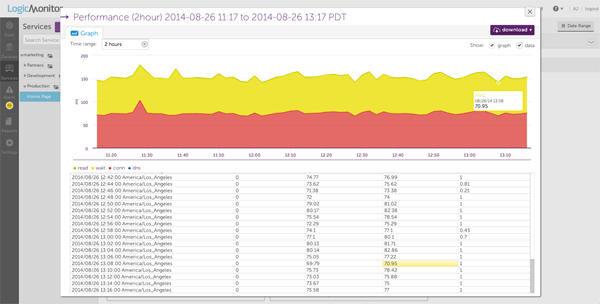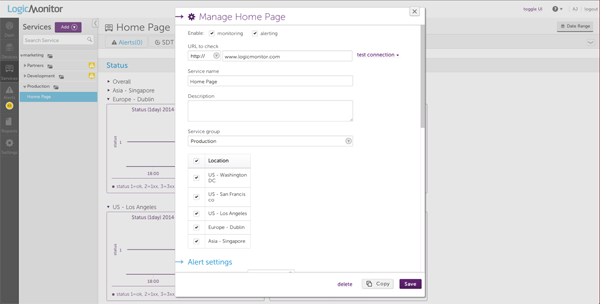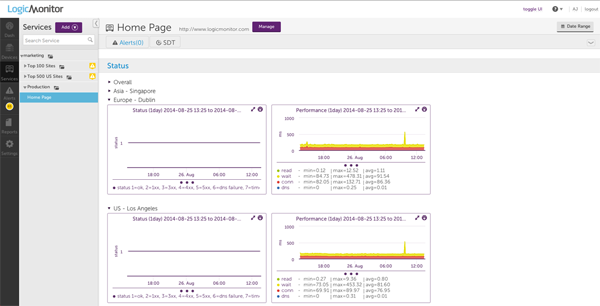Are You Logically Monitoring Your Entire Web Infrastructure?

LogicMonitor's new SiteMonitor solution is for anyone concerned about monitoring the performance of their website properties. Intrigued?
Website Magazine caught up with LogicMonitor CEO Kevin McGibben to discuss the importance of site monitoring, how SiteMonitor is different from other Web monitoring tools and what enterprises should look for when selecting a monitoring platform.
What are some of the fundamental needs in a monitoring platform?
 Kevin McGibben, CEO of LogicMonitor: Companies should demand several things in a monitoring platform:
Kevin McGibben, CEO of LogicMonitor: Companies should demand several things in a monitoring platform:
- Comprehensive device coverage - Will this platform monitor everything I need to monitor, such as servers, networks, databases, applications, VMs, my Cloud (Private or Public), websites and other Web services? A point solution that monitors just one or two of these, but doesn't have the ability to handle everything can cause chaos because when there is a problem, each technical area rushes to their point solution to find out what they can do to help. The DB guy may have one tool, the Sysadmin may be watching VM data, and the networking team may have their own solution.
Conflicting data and an inability to drill down or fully investigate and resolve the issue creates wasted effort and leads to finger pointing and slow problem resolution. LogicMonitor is a single tool that can be used by all teams and even can intelligently alert based on the type of problem - if it's a network problem, for example, we alert the networking person based on our escalation chains features. And we offer ability to access a wide range of data on all parts of the infrastructure, helping teams work together to identify and solve problems. This has a great benefit of breaking down organizational silos while solving problems faster.
- Automation - if a monitoring platform requires weeks or months to set up and fully configure, requires full-time head count associated with monitoring and doesn't automatically discover changes in your network, for example, and know that new devices need to be added to monitoring, it is missing a fundamental requirement. LogicMonitor includes ActiveDiscovery(TM) technology that automates discovery, configuration and ongoing management of monitoring.
- Hybrid - many companies are moving into the cloud and need a single monitoring solution that they can use to cover Cloud and their Co-Lo and on site infrastructure. LogicMonitor can monitor all of these, and provide results through a single pane of glass, so you don't need to waste time configuring and managing multiple tools.
Why should businesses be concerned with monitoring the performance of their website properties?
Every company needs to count on an available website in business today. All companies, regardless of their business - but especially online technology companies - are creating their first impression with their customers and their market with their Web presence. Anything other than great performance can negatively impact customer perceptions and certainly customer experience. Online businesses depend on the Web as their "product" is online business. That means that availability and performance impact revenue and customer experience. Monitoring the performance of website properties helps IT Ops teams know about problems before they happen - maximizing uptime and revenues.
What need(s) is SiteMonitor filling for online businesses that other solutions don't offer?
If you look at the SiteMonitor capabilities compared to other website monitoring tools, it would compare well. However, our clear differentiator is that the LogicMonitor monitors the entire infrastructure in addition to websites and Web applications. SiteMonitor doesn't just tell you "How is that website performing?" It will tell you "How is the server that the website application is running on performing, not to mention the database, storage and network gear that is delivering the application or service." No other monitoring platform paints the entire picture through a single application view like LogicMonitor does.




Subscribe to Our Newsletter!
Latest in Software








